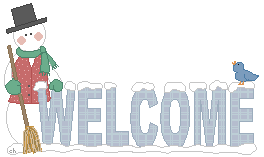|


About Our Project
Matching
Mittens - Recreating Images Through Words Alone
A Challenging Collaborative Project
In our class we are exploring the genre of folktales
with three of Jan Brett's books - Gingerbread Baby,
The Mitten, and The Hat.
We did much work with Gingerbread
Baby, and will continue our studies with The
Hat. For our work for the Frosty Readers 2002, however,
we focused on The Mitten in a most exciting and
challenging collaborative project with Michele
Nash's second graders in Wisconsin.
Our class first read The Mitten looking for some
of the elements of a folktale - repetition of words
or phrases and cumulative elements. The cumulative
piece was easy for the children to recognize - all those
animals being added to the mitten! The children have
become such great "element detectives," however, that
they noticed a repetition of an image/idea - words that
described the animals moving into the mitten. Although
these words were different for each animal, this concept
was repeated throughout the story.
Next we thought about "THE mitten" itself. Nicki wanted
a mitten white as snow, even though Baba warns him that
it will be difficult to find against the snow. We decided
to design a "safer" mitten - one that would be easy
to find against a background of white. This was also
the beginning of our collaborative work.
Using a template from Jan Brett's site, the children
each designed their own mitten. They were asked to keep
it simple, but Michele and I agree, simple is not really
in a second grader's vocabulary! The next step was to
write a description of what each mitten looked like.
These alone would be used by the second graders in Wisconsin
to recreate our mittens!
Writing descriptions, or in the case of Michele's students,
directions, was no easy task. Once completed our descriptions
were read and reread for clarity. Did we provide enough
information for the mitten to be redrawn? These descriptions
were then e-mailed to Wisconsin and we anxiously
awaited our own directions. We all thought the next
step would certainly be easier!
We received our directions and set to work to recreate
the Wisconsin mittens! We soon learned that if writing
directions was hard, following them was much, much more
difficult! We had many questions and using drafts, drew,
and redrew the mittens. Finally finished, we sent off
our creations through snail mail. We were thrilled to
receive those from Mrs. Nash's class, and we were also
amazed!!! Many of them were a VERY CLOSE match!!!
Click here to view our
mittens, our descriptions, and the redraws from
Wisconsin. Mrs. Nash and I both agree - second
graders are certainly amazing!!!
For lots of resources for The Mitten
click
here to vist Ms. Jacoby's website.
Try your hand at a matching game, concentration,
or a wordsearch for The Mitten. Just
click
here to go to Quia's website.
|
|

Addressing the Standards
Arlington
Curriculum Outcomes for English/Language Arts
Language
- Read and follow “how to” directions.
- Continue to reread to improve understanding.
- Use relevant text features to predict new information
in an independent manner (e.g., illustrations and
bold print).
Literature
- Understand story elements.
- Recognize genres (e.g., fables, fairy tales).
- Make connections between literature and other experiences
Composition
- Consider audience and purpose when writing.
- Revise writing to improve level of detail and logical
sequence.
Media
- Compare literature experienced through a variety
of media.
- Recognize initial elements of literature.
Massachusetts English Language Arts Frameworks
Language Strand
- Standard 4: Vocabulary and Concept Development
Reading and Literature Strand
- Standard 10: Genre
Composition Strand
- Standard 19: Writing
- Standard 20: Consideration of Audience and Purpose
- Standard 21: Revising
- Standard 22: Organizing Ideas in Writing
National Educational Technology Standards for Students.
(NETS)
- Students use telecommunications to collaborate,
publish, interact with peers, experts, and other audiences.
|

© Patricia Knox & Susan Silverman
- Frosty Readers 2002 - All Rights Reserved
Page created by Lanise Jacoby

| |